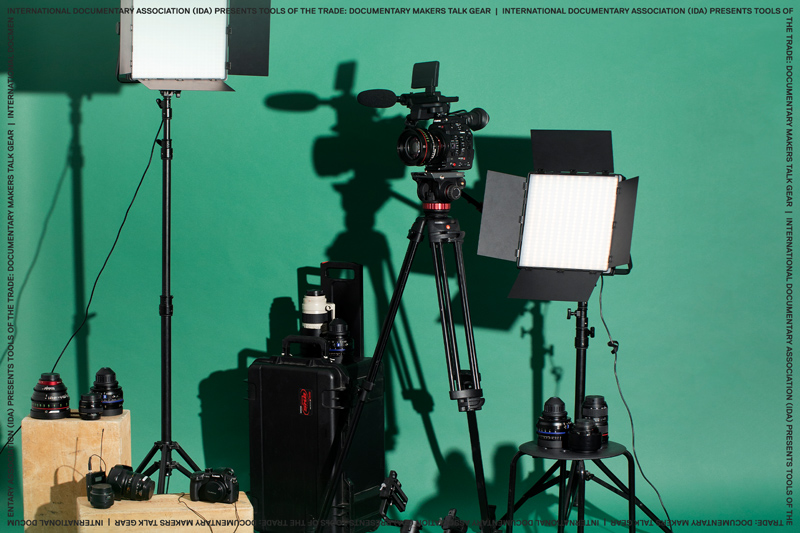
This article was originally published on IDA’s website, www.documentary.org
For as long as stories have called upon documentary filmmakers to tell them, makers have used—and evolved—technology to shape the art and business of reflecting reality. While hardly a techno-deterministic art form and impulse, there’s no question that the evolution of film gear—from early analog days to the evolving digital era—has simultaneously expanded to include new filmmakers while allowing the documentary form to capture the intimacy of private human moments. What’s possible in documentary storytelling—and by which storytellers—lives in parallel with technology innovations.
As artists, documentary filmmakers are a scrappy bunch who have long taken full advantage of the artistic possibilities of technology. Decades after photography pioneer Auguste and Louis Lumière invented the motion picture camera in the 1880s, heavy, expensive 35mm cameras dominated film—until documentarians and activists got their hands on less bulky 16mm field cameras that popped up in Army surplus stores after World War II. In the 1950s and into the 1960s, pioneering documentary filmmakers Robert Drew, DA Pennebaker, David and Albert Maysles, and Richard Leacock, notorious gear tinkerers, innovated a way to record audio and images at the same time in the field. In 1967, Sony’s revolutionary Portapack hit the market—the first battery-powered video gear that recorded simultaneous audio and picture, able to be operated by a single person. Filmmakers and activists quickly picked up on the style of intimate filmmaking powered by nimble gear, and the cinema vérité movement—alternately called direct cinema or observational film, free of the news-like construction and voice-of-God narration of the past—indelibly shaped documentary storytelling from the 1960s through the community media movements of the 1970s well into the present day.
With the help of accessible film gear and, later, video, activists filmed stories inside social movements, and voices from traditionally marginalized communities—people of color, women—demanded attention and distribution. In 1971, pioneers Julia Reichert, Jim Klein, Amalie Rothschild and Liane Brandon launched New Day Films to train women documentary filmmakers and fuel the growing women’s movement with the help of documentaries made by women on film and video. In 1994, Kartemquin Films, a leader in vérité documentary storytelling, filmed its legendary classic, Hoop Dreams, on video, converting it later to film for a theatrical release. Along the way, Kartemquin contributed to expanding audience interest and the commercial and public marketplace for documentary while showcasing an inexpensive way to film years of intimate material. In the early 2000s, film technology evolved again with the advent of home-based editing on Final Cut Pro and the move from mini-DV tapes to tapeless cameras. A democratizing gear climate and user-generated distribution on YouTube and Vimeo opened the door to new storytellers and the tales they tell. Contemporary documentaries like The Square (2013), Citizenfour (2014) and Minding the Gap (2018) are testimonials to accessible video and editing technology in the fast-moving digital age.
Today, amidst the dizzying pace of the streaming media era, documentary resides in a boom moment and expanded marketplace that ranges from legacy stalwarts like PBS and HBO to the revolutionary upstarts like Netflix, Amazon Prime, Hulu, Apple TV and more. New and emerging storytellers are more likely to be women and people of color than in years past, opening cultural portals to the depth of human experiences often invisible in the media sphere. As in years past, understanding how technology empowers documentary filmmakers remains important.
2019 Documentary Equipment Survey
In 2019, the International Documentary Association (IDA), with counsel from the Center for Media & Social Impact, launched a survey designed to investigate the gear favored by contemporary documentary filmmakers in the production and post-production processes, from cameras to audio to lighting to editing software, and why and how they make their technology decisions.
The first part of the survey yielded valuable qualitative information about why respondents favored specific equipment and programs. The next phase took a deeper, more quantitative dive into both the brands and models of gear that the documentary community deploys, as well as the range of shooting scenarios in the documentary practice. For Part II of the survey, all questions were asked in terms of filmmakers’ “most recent completed or post-production-stage documentary project.”
The results of both iterations of the survey provide a robust narrative about the optimal tools of the trade for making your best work. Read the brief report summarizing the findings from both parts of Tools of the Trade: Documentary Equipment Survey here.
All photography by Maggie Shannon
